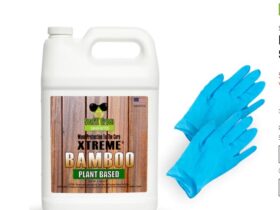Car wax is an essential component in the automotive care routine, playing a crucial role in preserving and enhancing the appearance of your vehicle. While many car owners are familiar with the term, not everyone fully understands its significance or how to use it effectively. In this comprehensive guide, we will delve into the world of car wax, exploring its benefits, types, application methods, and tips for achieving a stunning, long-lasting finish.
Understanding Car Wax:
Car wax is a protective coating applied to the exterior surfaces of a vehicle to shield it from environmental elements and maintain a glossy, polished appearance. It is designed to create a barrier between the paint and various contaminants such as dirt, road salt, bird droppings, and UV rays. Additionally, car wax enhances the depth and richness of the paint, giving your vehicle a showroom-quality shine.
Types of Car Wax:
Carnauba Wax:
- Derived from the leaves of the Brazilian carnauba palm tree.
- Known for its natural gloss and water-repellent properties.
- Provides a warm, deep shine and is a favorite among enthusiasts.
Synthetic Wax:
- Formulated with polymers and other synthetic materials.
- Offers durability and long-lasting protection.
- Generally easier to apply than carnauba wax.
Hybrid Wax:
- Combines the benefits of both carnauba and synthetic waxes.
- Provides a balance between natural shine and synthetic durability.
- Application Methods:
Preparation:
- Start with a clean, dry vehicle.
- Remove contaminants like dirt, grease, and old wax.
Hand Application:
- Apply a small amount of wax using a foam applicator.
- Work in small sections, using circular or back-and-forth motions.
- Allow the wax to haze, then buff with a microfiber cloth.
Machine Application:
- Ideal for larger vehicles or those with extensive paintwork.
- Use a dual-action polisher for even application.
- Follow the machine’s instructions and finish with hand buffing.
Tips for Optimal Results:
Frequency of Application:
- Waxing your car every 3-6 months is a general guideline.
- However, factors like climate and usage may influence the frequency.
Surface Temperature:
- Avoid waxing under direct sunlight or on a hot surface.
- Optimal application temperature is usually between 60-80°F.
Layering:
- Applying multiple thin layers of wax is more effective than one thick layer.
- Layering enhances durability and depth of shine.
Post-Wax Maintenance:
- Use a high-quality detailer spray between waxing to maintain the shine.
- Regular washing with a pH-balanced car shampoo is essential.
Conclusion:
Car wax is not just a luxury; it’s a necessity for car owners looking to preserve the beauty and integrity of their vehicles. Whether you opt for the natural brilliance of carnauba wax or the durability of synthetic formulations, regular waxing will reward you with a head-turning, well-protected finish. Make car waxing a part of your routine, and watch your vehicle gleam with pride on the road.







